It can be frustrating when you need to shut down your PC for some reason but don't want to install updates that you've downloaded and are ready to install the next time your PC is shut down or restarted.
You'll be happy to know that you can turn off your Windows 11 PC without updating it. Here are various ways to shut down your Windows 11 PC while avoiding system updates.
How to Check if Updates Are Hanging on Windows 11
Before we venture into methods that allow you to shut down your PC without having to install updates, understand that Windows is scheduled to install on your system Time and updates are important.
It goes without saying that if the Pause Updates option is not enabled on your PC, Windows will continue to download updates and install them on further shutdowns or restarts.
Let’s see if there are any updates queued to be installed on your system for the next shutdown, and what exactly those updates are.
Press the Windows keys on your keyboard to open the Start menu.
![在不更新的情况下关闭 Windows 11 的 6 种方法 [100% 有效]](https://img.php.cn/upload/article/000/887/227/168570599844577.png?x-oss-process=image/resize,p_40)
In the Start menu, search for "Check for Updates" and click on the same from the search results.
![在不更新的情况下关闭 Windows 11 的 6 种方法 [100% 有效]](https://img.php.cn/upload/article/000/887/227/168570599882643.png?x-oss-process=image/resize,p_40)
Here you can see the complete list of pending updates to be installed the next time you shut down or restart.
![在不更新的情况下关闭 Windows 11 的 6 种方法 [100% 有效]](https://img.php.cn/upload/article/000/887/227/168570599885828.png?x-oss-process=image/resize,p_40)
How Windows Update Works [Explanation]
Let’s see how Windows 11 handles automatic updates in the background. In short, the following events outline how to install updates on your PC to upgrade to Windows 11.
- If the Pause Updates feature is not enabled, that is, updates are not paused, Windows will automatically check for updates periodically during inactive times.
- After it finds updates that are compatible with your system, Windows will begin downloading them in the background unless you are using a metered connection.
- After downloading, Windows will install these updates on your system without any additional input from you.
- Windows After you finish installing the updates on your PC, they need to be set up on your system as expected. For this purpose, Windows 11 will provide you with 2 additional options: "Update and shut down" and "Update and restart".
This process can be bypassed using the above method and we recommend you try the same method to shut down your PC without updating Windows 11.
How to shut down Windows 11 without updating in 6 ways
Here are 5 ways to bypass Windows updates and shut down your PC immediately.
Method 1: Pause updates and shut down your PC
Press the Windowskeys on your keyboard to open the Start menu.
![在不更新的情况下关闭 Windows 11 的 6 种方法 [100% 有效]](https://img.php.cn/upload/article/000/887/227/168570599844577.png?x-oss-process=image/resize,p_40)
In the Start menu, search for "Check for Updates" and click on the same from the search results.
![在不更新的情况下关闭 Windows 11 的 6 种方法 [100% 有效]](https://img.php.cn/upload/article/000/887/227/168570599882643.png?x-oss-process=image/resize,p_40)
Find the "Pause Updates" option and click the drop-down menu next to it.
![在不更新的情况下关闭 Windows 11 的 6 种方法 [100% 有效]](https://img.php.cn/upload/article/000/887/227/168570599950113.png?x-oss-process=image/resize,p_40)
#From the drop-down list, select the desired duration to pause Windows Updates on your PC.
![在不更新的情况下关闭 Windows 11 的 6 种方法 [100% 有效]](https://img.php.cn/upload/article/000/887/227/168570599991636.png?x-oss-process=image/resize,p_40)
#You will notice that updates have been paused on your PC for the selected duration.
![在不更新的情况下关闭 Windows 11 的 6 种方法 [100% 有效]](https://img.php.cn/upload/article/000/887/227/168570599971520.png?x-oss-process=image/resize,p_40)
You can now shut down your PC gracefully without updating Windows.
To do this, press the Windows keys on your keyboard and click the Power icon.
![在不更新的情况下关闭 Windows 11 的 6 种方法 [100% 有效]](https://img.php.cn/upload/article/000/887/227/168570599940813.png?x-oss-process=image/resize,p_40)
Click on the "Close" option.
![在不更新的情况下关闭 Windows 11 的 6 种方法 [100% 有效]](https://img.php.cn/upload/article/000/887/227/168570600052688.png?x-oss-process=image/resize,p_40)
Method Two: 3 Ways to Use Shutdown (Avoiding "Update and Shutdown")
In Windows 11, you can now use the Power Menu Easily skip updates and shut down your computer. These options are only accessible through the Start menu, lock screen, or quick access system menu. Depending on your preference, follow any of the methods below.
2.1: Using Start
Let’s first examine the Start Menu method.
Press the Windows keys on your keyboard and click the Power icon.
NOTE: Whenever an update comes to be installed on your PC, there will be a little yellow dot inside the Power option.
![在不更新的情况下关闭 Windows 11 的 6 种方法 [100% 有效]](https://img.php.cn/upload/article/000/887/227/168570600022796.png?x-oss-process=image/resize,p_40)
Click on the "Close" option.
![在不更新的情况下关闭 Windows 11 的 6 种方法 [100% 有效]](https://img.php.cn/upload/article/000/887/227/168570600062158.png?x-oss-process=image/resize,p_40)
2.2: Shut down using the lock screen menu
Note:We recommend that you save all your work and close all open apps in the background program before continuing with the following steps.
Press the Windows Lkeyboard to lock your PC and log out of the current user account. Now click on the power menu in the lower right corner of the screen and select "Shut down" instead of "Update and shut down".
![在不更新的情况下关闭 Windows 11 的 6 种方法 [100% 有效]](https://img.php.cn/upload/article/000/887/227/168570600016145.jpg?x-oss-process=image/resize,p_40)
#Your PC will now shut down itself without installing pending Windows updates on your system.
2.3: Using the Power Menu
Note: This method has been tried and tested on Windows 11. Therefore, we recommend using this method only if the above two methods do not work for you.
Press the Windows X keyboard to bring up the quick access menu. Hover over "Close or Exit."
![在不更新的情况下关闭 Windows 11 的 6 种方法 [100% 有效]](https://img.php.cn/upload/article/000/887/227/168570600055905.png?x-oss-process=image/resize,p_40)
Click and select Close from the subsequent menu.
![在不更新的情况下关闭 Windows 11 的 6 种方法 [100% 有效]](https://img.php.cn/upload/article/000/887/227/168570600063416.png?x-oss-process=image/resize,p_40)
#Windows will now shut down your PC without installing pending updates in the process.
Method 3: Use CMD (Command Prompt) to force shut down your PC
Press the Windows keys on your keyboard to open the Start menu.
![在不更新的情况下关闭 Windows 11 的 6 种方法 [100% 有效]](https://img.php.cn/upload/article/000/887/227/168570599844577.png?x-oss-process=image/resize,p_40)
In the Start menu, search for "cmd" and click "Run as administrator." Confirm the UAC prompt to launch CMD as administrator.
![在不更新的情况下关闭 Windows 11 的 6 种方法 [100% 有效]](https://img.php.cn/upload/article/000/887/227/168570600138027.png?x-oss-process=image/resize,p_40)
In the command prompt, type the following command and press Enter on your keyboard.
shutdown /p
![在不更新的情况下关闭 Windows 11 的 6 种方法 [100% 有效]](https://img.php.cn/upload/article/000/887/227/168570600185485.png?x-oss-process=image/resize,p_40)
Your PC will now shut down without updating Windows.
Method Four: Use the Power Key to Force a Shutdown
Another way to perform a shutdown on your desktop or laptop without updating Windows is to force a shutdown using the physical power button on your PC. You can force a shutdown by pressing and holding the power button on your PC.
A long press of the power button essentially cuts power to your PC, closing the application and ending the process without saving progress along the way.
However, this method is only recommended if your system is completely unresponsive or other methods do not meet your needs.
Method 5: Clear your SoftwareDistribution folder to remove updates
The SoftwareDistribution folder is where Windows 11 stores downloaded updates. If these files are deleted, Windows will need to download them again. This is the secret behind this method.
If you stop the Windows Update service before deleting these files, the update files will not be downloaded, and naturally you will only see the graceful shutdown option in the power options. Even if configured to shut down, pressing the power button once will shut down gracefully.
Let's see how to implement this method.
Press the Windows keys on your keyboard to open the Start menu.
![在不更新的情况下关闭 Windows 11 的 6 种方法 [100% 有效]](https://img.php.cn/upload/article/000/887/227/168570599844577.png?x-oss-process=image/resize,p_40)
In the Start menu, search for "cmd" and click "Run as administrator." Click Yes at the prompt to provide the necessary permissions.
![在不更新的情况下关闭 Windows 11 的 6 种方法 [100% 有效]](https://img.php.cn/upload/article/000/887/227/168570600138027.png?x-oss-process=image/resize,p_40)
In the command prompt, type the following command and Enterpress your keyboard when finished.
net stop wuauserv
Note: Make sure no other updates are installed when running this command. If so, this command will not shut down the Windows Update service.
![在不更新的情况下关闭 Windows 11 的 6 种方法 [100% 有效]](https://img.php.cn/upload/article/000/887/227/168570600182224.png?x-oss-process=image/resize,p_40)
Enter the following command and Enterpress the keyboard again.
net stop bits
![在不更新的情况下关闭 Windows 11 的 6 种方法 [100% 有效]](https://img.php.cn/upload/article/000/887/227/168570600217512.png?x-oss-process=image/resize,p_40)
With the Windows Update service disabled, navigate to the SoftwareDistribution folder on your PC. This folder is most likely located in the following location on your system.
C:\Windows\SoftwareDistribution
![在不更新的情况下关闭 Windows 11 的 6 种方法 [100% 有效]](https://img.php.cn/upload/article/000/887/227/168570600274721.png?x-oss-process=image/resize,p_40)
Ctrl Apress from the keyboard to select SoftwareDistribution All files in the folder.
![在不更新的情况下关闭 Windows 11 的 6 种方法 [100% 有效]](https://img.php.cn/upload/article/000/887/227/168570600242127.png?x-oss-process=image/resize,p_40)
DELETE from the keyboard to delete all selected files.
Note: Windows will create these files again when you run Windows Update.
![在不更新的情况下关闭 Windows 11 的 6 种方法 [100% 有效]](https://img.php.cn/upload/article/000/887/227/168570600275610.png?x-oss-process=image/resize,p_40)
Windows keys on your keyboard and click the Power icon.
![在不更新的情况下关闭 Windows 11 的 6 种方法 [100% 有效]](https://img.php.cn/upload/article/000/887/227/168570599940813.png?x-oss-process=image/resize,p_40)
Note: You may still see the "Update and Close" and "Update and Restart" options during this step. In either case, clicking a simple "Close" option will do the job.
![在不更新的情况下关闭 Windows 11 的 6 种方法 [100% 有效]](https://img.php.cn/upload/article/000/887/227/168570600052688.png?x-oss-process=image/resize,p_40)
Windows keys on your keyboard to open the Start menu.
![在不更新的情况下关闭 Windows 11 的 6 种方法 [100% 有效]](https://img.php.cn/upload/article/000/887/227/168570599844577.png?x-oss-process=image/resize,p_40)
![在不更新的情况下关闭 Windows 11 的 6 种方法 [100% 有效]](https://img.php.cn/upload/article/000/887/227/168570600138027.png?x-oss-process=image/resize,p_40)
Enterpress the keyboard when finished.
net start wuauserv
![在不更新的情况下关闭 Windows 11 的 6 种方法 [100% 有效]](https://img.php.cn/upload/article/000/887/227/168570600351988.png?x-oss-process=image/resize,p_40)
Enterpress the keyboard again.
net start bits
![在不更新的情况下关闭 Windows 11 的 6 种方法 [100% 有效]](https://img.php.cn/upload/article/000/887/227/168570600321073.png?x-oss-process=image/resize,p_40)
Method #5 and shut down your PC without updating Windows.
Method 6: Use Group Policy EditorIf you are a Windows Pro user, you can use Group Policy Editor to disable Windows Updates when shutting down or restarting your PC. This option will be permanent and you will need to initiate Update during shutdown or restart from the Settings menu. Please follow the tutorial below to help you through the process. Press theWindows R keyboard and enter the following. When finished, press Enter on your keyboard.
gpedit.msc
![在不更新的情况下关闭 Windows 11 的 6 种方法 [100% 有效]](https://img.php.cn/upload/article/000/887/227/168570600329206.png?x-oss-process=image/resize,p_40)
Computer Configuration > Windows Components > Windows Update > Legacy Policies
![在不更新的情况下关闭 Windows 11 的 6 种方法 [100% 有效]](https://img.php.cn/upload/article/000/887/227/168570600323288.png?x-oss-process=image/resize,p_40)
![在不更新的情况下关闭 Windows 11 的 6 种方法 [100% 有效]](https://img.php.cn/upload/article/000/887/227/168570600387626.png?x-oss-process=image/resize,p_40)
Click and select Enable.
![在不更新的情况下关闭 Windows 11 的 6 种方法 [100% 有效]](https://img.php.cn/upload/article/000/887/227/168570600329773.png?x-oss-process=image/resize,p_40)
Now click OK to save your changes.
![在不更新的情况下关闭 Windows 11 的 6 种方法 [100% 有效]](https://img.php.cn/upload/article/000/887/227/168570600481686.png?x-oss-process=image/resize,p_40)
Click "Manage End User Experience" on the left.
![在不更新的情况下关闭 Windows 11 的 6 种方法 [100% 有效]](https://img.php.cn/upload/article/000/887/227/168570600416308.png?x-oss-process=image/resize,p_40)
Now double-click "Configure automatic updates" on the right.
![在不更新的情况下关闭 Windows 11 的 6 种方法 [100% 有效]](https://img.php.cn/upload/article/000/887/227/168570600480955.png?x-oss-process=image/resize,p_40)
Click "Enable".
![在不更新的情况下关闭 Windows 11 的 6 种方法 [100% 有效]](https://img.php.cn/upload/article/000/887/227/168570600429202.png?x-oss-process=image/resize,p_40)
Click the drop-down menu on the left and select "2- Notify to download and install automatically".
![在不更新的情况下关闭 Windows 11 的 6 种方法 [100% 有效]](https://img.php.cn/upload/article/000/887/227/168570600499570.png?x-oss-process=image/resize,p_40)
Click OK to save your changes.
![在不更新的情况下关闭 Windows 11 的 6 种方法 [100% 有效]](https://img.php.cn/upload/article/000/887/227/168570600493027.png?x-oss-process=image/resize,p_40)
You can now close the Group Policy Editor and you can now shut down your PC normally. Windows updates will not be applied to your PC.
Tip: We recommend that you use the lock screen method above to ensure that updates are not installed when you choose to turn off after configuring this policy.
What doesn’t work when you need to shut down without updating on Windows 11
You must be wondering why some obvious methods are missing from this article. That's because those seemingly simple ways of performing a shutdown on your PC may end up requiring you to install updates, either way. Here's a short list of methods that, however, don't quite work.
1. Shut down using the ALT F4 combination
When you use this shortcut on the desktop screen, the shutdown menu will pop up where you can select different options . If you select Close in the menu, Windows 11 will install the update. This option now works with 'Update and s
![在不更新的情况下关闭 Windows 11 的 6 种方法 [100% 有效]](https://img.php.cn/upload/article/000/887/227/168570600410183.png?x-oss-process=image/resize,p_40)
2.Configuring the shutdown key
Change the "When I press the power button" Setting it to "Shutdown" also has no effect. In this case, pressing the power button once will effectively perform an "update and shut down" operation.
![在不更新的情况下关闭 Windows 11 的 6 种方法 [100% 有效]](https://img.php.cn/upload/article/000/887/227/168570600516689.png?x-oss-process=image/resize,p_40)
3. Shutdown /s command
Even running the shutdown /s command in the command line window does not help. You'll find that this approach is also equivalent to performing an "update and close" operation.
![在不更新的情况下关闭 Windows 11 的 6 种方法 [100% 有效]](https://img.php.cn/upload/article/000/887/227/168570600582075.png?x-oss-process=image/resize,p_40)
#4. Once you start installing the update, nothing will help, including long pressing the power button
If you are in the middle of the installation Forced shutdown by long-pressing the power button is also ineffective because the precautionary mechanism has been activated. This is because when you restart your computer, Windows ensures that pending updates that were not completed before are installed.
![在不更新的情况下关闭 Windows 11 的 6 种方法 [100% 有效]](https://img.php.cn/upload/article/000/887/227/168570600511709.png?x-oss-process=image/resize,p_40)
Alternatives to shutting down on Windows
While the shutting down option is the obvious choice, it's worth noting that when you find yourself away from your PC, Windows 11 offers some other useful alternatives. These alternatives, Hibernation Mode and Sleep Mode, are designed for situations when saving work is critical to you.
- Hibernation Mode: As an alternative to the shutdown option, Hibernation Mode allows your PC to save your current work so you can retrieve it later when your PC restarts. This information is stored on your hard drive and may be gigabytes in size.
- Sleep Mode: Sleep mode is a low-power mode of the PC that uses RAM to store information about the applications and processes running on the PC so that it can be used again later when the PC is used. The same information was retrieved. While your system state is stored in memory, the other components of your PC use very little power, albeit slightly more than in hibernation.
Needless to say, neither method requires you to update Windows.
Let’s see how you can configure the power button in the Start menu to display these options and then use them as an alternative to turning off the options.
Press the Windows keys on your keyboard to open the Start menu.
![在不更新的情况下关闭 Windows 11 的 6 种方法 [100% 有效]](https://img.php.cn/upload/article/000/887/227/168570599844577.png?x-oss-process=image/resize,p_40)
In the Start menu, search for "Control Panel" and click it from the search results.
![在不更新的情况下关闭 Windows 11 的 6 种方法 [100% 有效]](https://img.php.cn/upload/article/000/887/227/168570600526053.png?x-oss-process=image/resize,p_40)
In Control Panel, click the "Hardware and Sound" option.
![在不更新的情况下关闭 Windows 11 的 6 种方法 [100% 有效]](https://img.php.cn/upload/article/000/887/227/168570600571711.png?x-oss-process=image/resize,p_40)
Under Power Options, click the Change what the power buttons do option.
![在不更新的情况下关闭 Windows 11 的 6 种方法 [100% 有效]](https://img.php.cn/upload/article/000/887/227/168570600552484.png?x-oss-process=image/resize,p_40)
Click the "Change settings that are currently unavailable" option.
![在不更新的情况下关闭 Windows 11 的 6 种方法 [100% 有效]](https://img.php.cn/upload/article/000/887/227/168570600646793.png?x-oss-process=image/resize,p_40)
Click the checkbox next to the Sleep and Hibernate options to make them visible in the power menu.
![在不更新的情况下关闭 Windows 11 的 6 种方法 [100% 有效]](https://img.php.cn/upload/article/000/887/227/168570600639998.png?x-oss-process=image/resize,p_40)
Finally, click Save Changes to finalize your changes.
![在不更新的情况下关闭 Windows 11 的 6 种方法 [100% 有效]](https://img.php.cn/upload/article/000/887/227/168570600629381.png?x-oss-process=image/resize,p_40)
You can now use sleep and hibernate modes from the power menu itself.
To do this, press the Windows keys on your keyboard and click the Power icon.
![在不更新的情况下关闭 Windows 11 的 6 种方法 [100% 有效]](https://img.php.cn/upload/article/000/887/227/168570599940813.png?x-oss-process=image/resize,p_40)
Now, click on the action you want to perform (Sleep or Hibernate).
![在不更新的情况下关闭 Windows 11 的 6 种方法 [100% 有效]](https://img.php.cn/upload/article/000/887/227/168570600658531.png?x-oss-process=image/resize,p_40)
FAQ
Here are some frequently asked questions about shutting down your PC without installing Windows updates that should help you become familiar with the concept . let's start.
Where is the update download folder?
Windows 11 downloads updates in the SoftwareDistribution folder on your PC itself. This folder is most likely located in the following location on your system.
C:\Windows\SoftwareDistribution
Is it safe to force close?
While many users are accustomed to force shutting down the system by long-pressing the power button, it is not recommended to do so repeatedly.
In addition to losing progress on unsaved work, you also run the risk of corrupting your hard drive data.
Is it possible to pause updates on Windows 11?
Yes. Updates can be paused on Windows 11. Implement this theme easily with the step-by-step guide in this article, Method #01. If you have any questions about this, please feel free to read on.
Can you manually uninstall updates on Windows 11?
Yes. Updates on Windows 11 can be uninstalled manually. To do so, open Windows Update settings in your PC and select Update History.
![在不更新的情况下关闭 Windows 11 的 6 种方法 [100% 有效]](https://img.php.cn/upload/article/000/887/227/168570600631744.png?x-oss-process=image/resize,p_40)
Then, scroll down to Related Settings and click Uninstall Updates. This will open the Installed Updates page in Control Panel.
![在不更新的情况下关闭 Windows 11 的 6 种方法 [100% 有效]](https://img.php.cn/upload/article/000/887/227/168570600661463.png?x-oss-process=image/resize,p_40)
Here, right-click the update you want to uninstall and click Uninstall
![在不更新的情况下关闭 Windows 11 的 6 种方法 [100% 有效]](https://img.php.cn/upload/article/000/887/227/168570600710156.png?x-oss-process=image/resize,p_40)
Complete the process by restarting your PC.
What happens if I use the power button to force a shutdown while an update is being installed
Forcing a shutdown on the computer can interrupt the Windows Update installation. However, if you restart your PC, Windows will restart installing the update.
What happens if you try to turn off the Windows Update service from cmd while installing updates?
You will not be able to turn off the Windows Update service from the command prompt. Also, the ongoing update installation will be stopped and you will see the following error in Windows Update settings.
![在不更新的情况下关闭 Windows 11 的 6 种方法 [100% 有效]](https://img.php.cn/upload/article/000/887/227/168570600728617.png?x-oss-process=image/resize,p_40)
That brings us to the end. We hope that with the content of this article, all your questions about workarounds that allow you to shut down your PC without updating Windows have been answered. However, we also recognize that technical minds are always curious.
The above is the detailed content of 6 Ways to Shut Down Windows 11 Without Updating [100% Effective]. For more information, please follow other related articles on the PHP Chinese website!
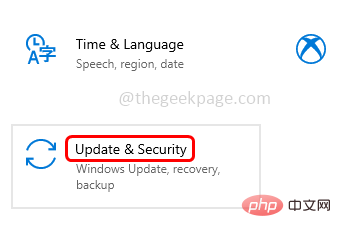 Windows 10/11 上的病毒和威胁防护引擎不可用问题Apr 13, 2023 pm 02:01 PM
Windows 10/11 上的病毒和威胁防护引擎不可用问题Apr 13, 2023 pm 02:01 PMWindows Defender是一种保护系统免受病毒攻击的功能。尝试安装最新的安全更新时,一些用户收到一条错误消息,指出“病毒和威胁防护引擎不可用”。此错误主要是由于系统文件损坏,系统上的更新过时或Windows更新中的某些问题等。可以通过安装最新更新、重置 Windows 安全中心应用程序、调整注册表编辑器项等来解决。在本文中,我们提供了一些解决方案,可帮助您在Windows计算机上解决此问题。方法 1 – 运行 Windows 更新疑难解答步骤 1 –一起使用Windows + I键打开窗
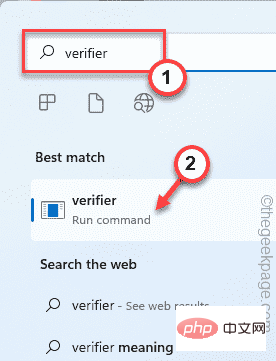 修复:Windows 11、10 中的错误 CLOCK WATCHDOG TIMEOUTApr 13, 2023 pm 03:07 PM
修复:Windows 11、10 中的错误 CLOCK WATCHDOG TIMEOUTApr 13, 2023 pm 03:07 PM蓝屏死机问题在 Windows 中并不是什么新鲜事。其中一个问题是“ CLOCK_WATCHDOG_TIMEOUT ”错误代码,它可能会突然使系统崩溃并重新启动系统。尽管此问题背后的实际原因可能因用户而异,但通常这是处理器的问题。核心线程之间响应的不规则性是这个问题的根本原因。但别担心。只需按照这些简单的修复即可快速找到解决方案。修复 1 – 使用驱动程序验证程序如果您的系统上安装了未知驱动程序,则必须使用验证程序。第1步1. 按Windows 键并在搜索框中输入“ verifier ”。2.
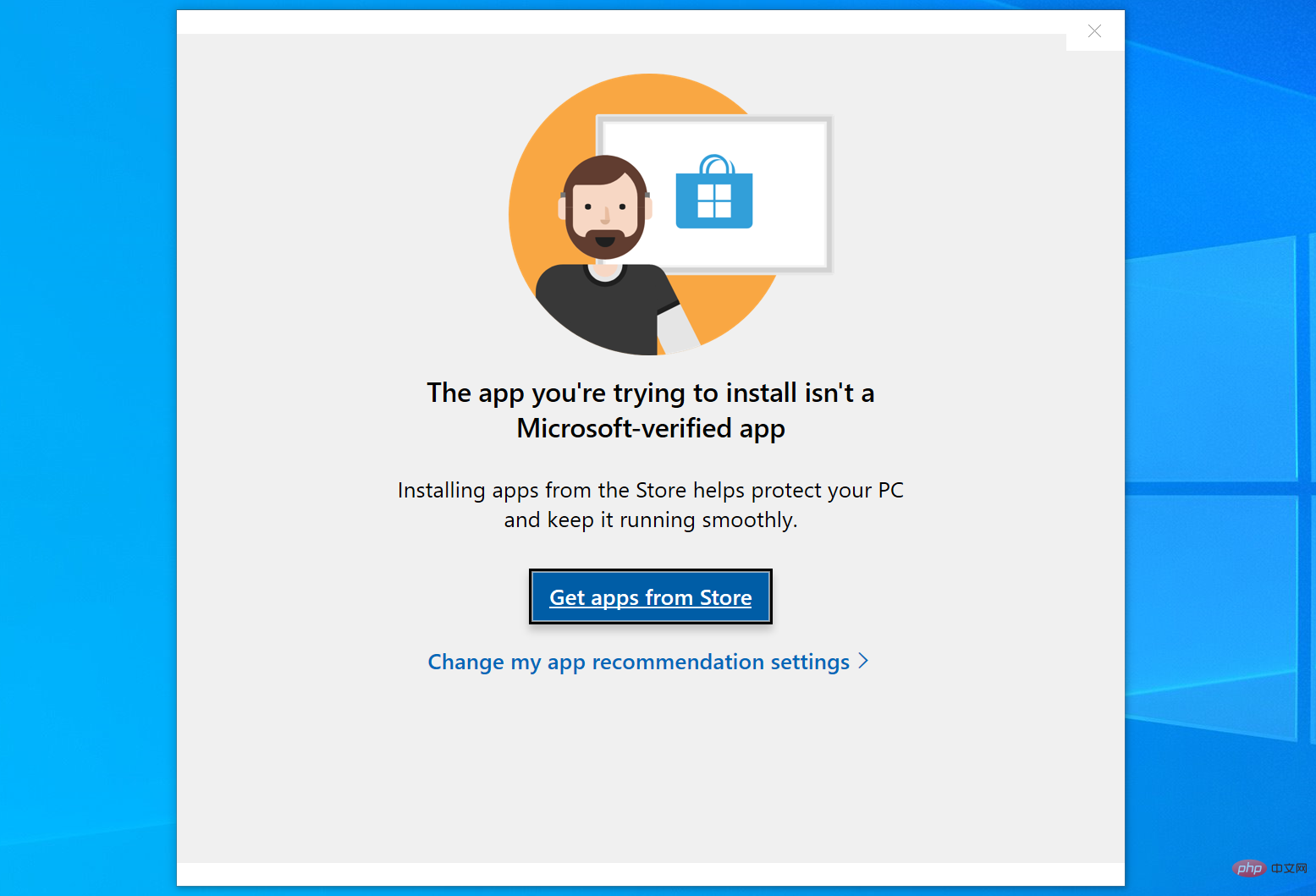 如何修复您尝试安装的应用不是 Windows 上经过 Microsoft 验证的应用Apr 13, 2023 pm 05:52 PM
如何修复您尝试安装的应用不是 Windows 上经过 Microsoft 验证的应用Apr 13, 2023 pm 05:52 PMMicrosoft Windows 10 和 11 可能配置为仅允许在设备上安装某些类型的应用程序。该限制可能是有意的,例如,当限制可以安装在设备上的内容的策略到位时,但有时也是无意的。以下指南提供了易于遵循的分步说明,以解决意外出现的错误消息。尝试安装某些类型的应用程序的 Windows 用户可能会收到错误消息“您尝试安装的应用程序不是 Microsoft 验证的应用程序”。该对话框几乎没有提供有关安装被阻止原因的信息。它指出“从商店安装应用程序有助于保护您的 PC 并使其平稳运行”,并链接到
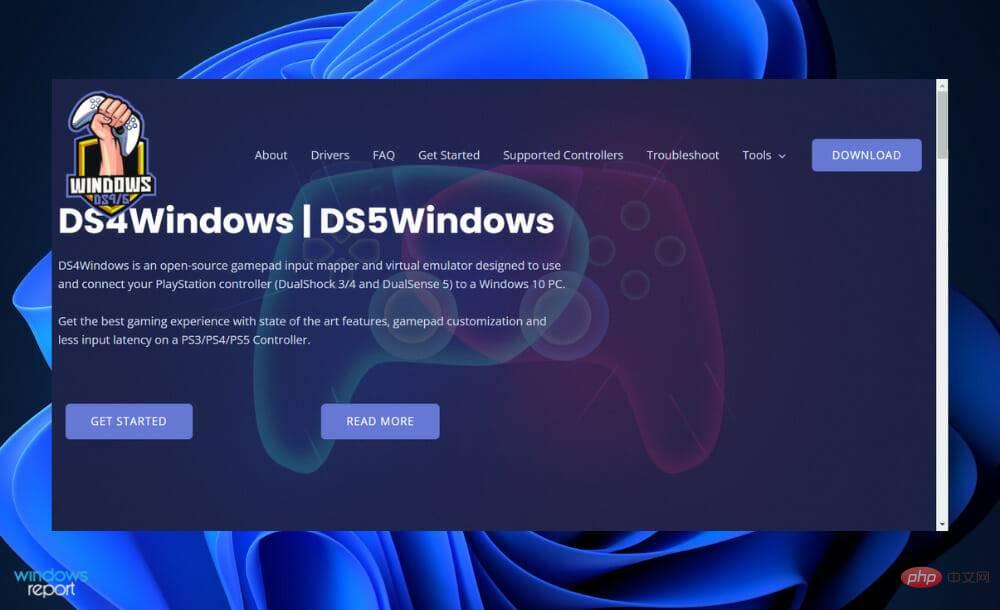 DS4Windows 11 不工作?立即应用这些修复Apr 13, 2023 pm 06:04 PM
DS4Windows 11 不工作?立即应用这些修复Apr 13, 2023 pm 06:04 PM<p>在某些情况下,将 DualShock 4 或 DualSense 5 控制器与 Windows PC 一起使用似乎会出现问题,控制器连接不正确或可能根本无法连接。</p><p>另一方面,PS4 和 PS5 都是针对各自的游戏机专门开发和优化的。现在,如果您是在 Windows 11 上遇到 DS4Windows 无法正常工作问题的不幸人士之一,您可以使用本教程来修复错误。</p>
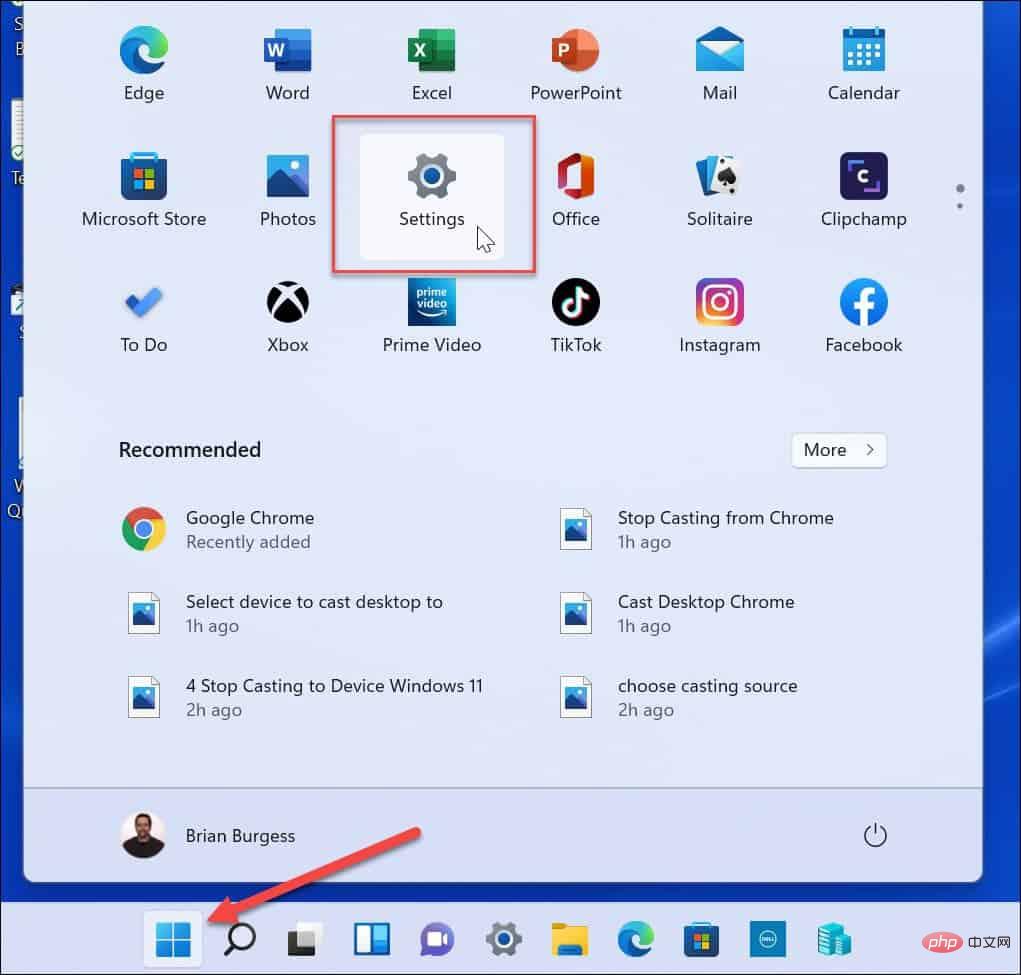 在 Windows 11 上停止自动更新的三种方法Apr 13, 2023 pm 05:40 PM
在 Windows 11 上停止自动更新的三种方法Apr 13, 2023 pm 05:40 PM<h2>如何在 Windows 11 上停止自动更新</h2><p>在 Windows 11 上停止自动更新的一种方法是调整更新设置。使用此方法时,您可以在 Windows 11 家庭版或专业版上暂停更新长达五周。</p><p>要在 Windows 11 上暂停更新,请使用以下步骤:</p><ol>&a
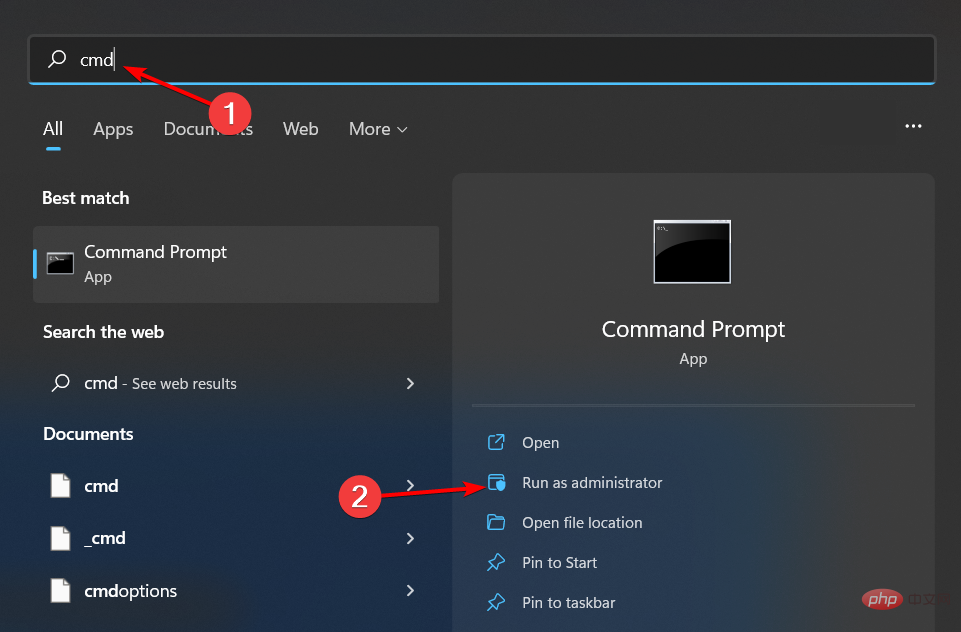 修复: Windows 无法初始化此硬件的设备驱动程序Apr 13, 2023 pm 01:19 PM
修复: Windows 无法初始化此硬件的设备驱动程序Apr 13, 2023 pm 01:19 PM错误代码 37 表示 Windows 检测到设备驱动程序存在问题,无法启动硬件设备。这意味着您的系统上未正确安装软件设备驱动程序,或者您尝试使用的硬件与 Windows 不兼容。您已经知道驱动程序对于设备的平稳运行至关重要,因此如果您要使用硬件设备,则需要立即解决此错误。在本文中,我们将向您展示绕过此错误的各种方法。是什么原因导致 Windows 错误代码 37?当您得到 Windows 无法初始化此硬件的设备驱动程序时。(代码 37) 消息,它可能由几个问题引起,包括:兼容性问题 – 当您将硬
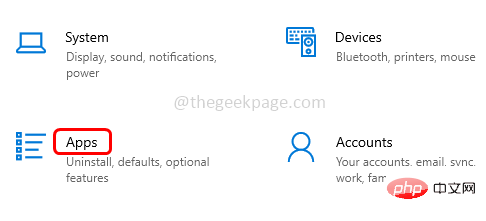 如何修复 Roblox 无法在 Windows 10 中安装或下载Apr 13, 2023 am 11:46 AM
如何修复 Roblox 无法在 Windows 10 中安装或下载Apr 13, 2023 am 11:46 AMRoblox 是一个帮助创建游戏的在线游戏平台;用户可以在世界任何地方玩它们。但是一些用户在安装 Roblox 时会遇到问题。无法成功安装游戏,它只是在安装过程中崩溃。原因可能是缓存损坏、DNS 设置、防火墙问题、系统可能需要安装最新更新等。在本文中,我们将讨论可以用来解决问题的不同方案和方法。让我们开始吧!方法 1:使用设置重置 Microsoft Store第 1 步:同时使用Windows + I键打开 Windows 设置。第 2 步:点击应用程序第 3 步:在右侧,找到应用和功能下的M
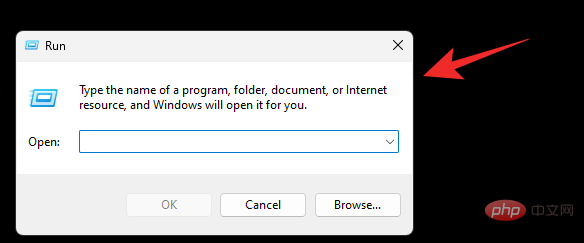 在 Windows 11 上禁用锁定屏幕的 3 种方法Apr 13, 2023 pm 02:19 PM
在 Windows 11 上禁用锁定屏幕的 3 种方法Apr 13, 2023 pm 02:19 PM移动设备上的锁屏是一项基本功能,可帮助您随时了解设备上的最新动态,同时无需解锁设备即可访问最常用的重要功能。但是桌面系统上的锁屏并没有多大意义,主要是因为它们没有那么有用。您可以在锁定屏幕上收到通知并切换用户,仅此而已。而且,如果您像我一样,那么您很可能已经在移动设备上收到了通知,这使得桌面锁定屏幕上的通知变得多余。此外,您可能不会与任何不需要切换用户的人共享您的设备。在所有此类情况下,您可以使用以下方法禁用 Windows 11 上的锁定屏幕。 为什么要禁用锁定屏幕?根据您的工作流程,禁用锁定

Hot AI Tools

Undresser.AI Undress
AI-powered app for creating realistic nude photos

AI Clothes Remover
Online AI tool for removing clothes from photos.

Undress AI Tool
Undress images for free

Clothoff.io
AI clothes remover

AI Hentai Generator
Generate AI Hentai for free.

Hot Article

Hot Tools

EditPlus Chinese cracked version
Small size, syntax highlighting, does not support code prompt function

ZendStudio 13.5.1 Mac
Powerful PHP integrated development environment

Safe Exam Browser
Safe Exam Browser is a secure browser environment for taking online exams securely. This software turns any computer into a secure workstation. It controls access to any utility and prevents students from using unauthorized resources.

Dreamweaver Mac version
Visual web development tools

VSCode Windows 64-bit Download
A free and powerful IDE editor launched by Microsoft







